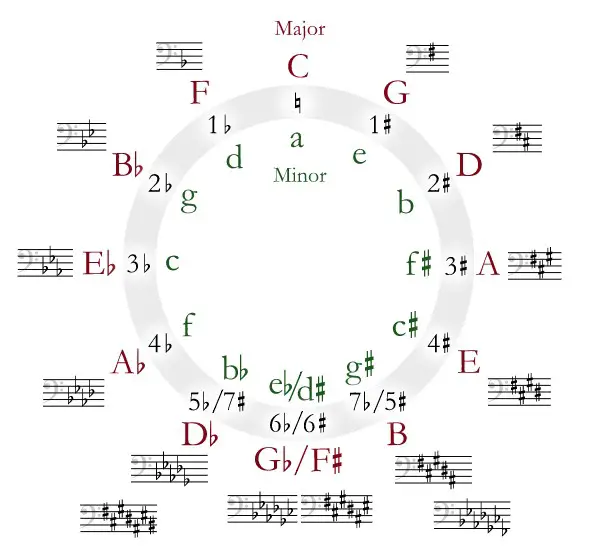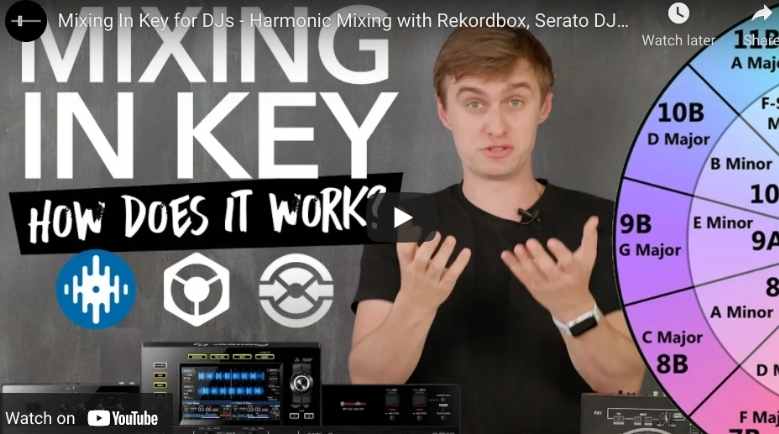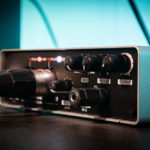As you progress as a DJ, you will find that, whether you like it or not, you will begin to cover music theory topics.
Music theory can seem daunting to the non-musically trained DJ, with its layered jargon and strong advocates. Still, it can be a helpful and vital step in becoming a professional and proficient DJ.
Mixing in harmony, which involves being aware of key, can make your mixes seamless; being well-versed in how key works is one step to make you into a comfortable and proficient DJ.
If you’re having trouble mixing, learning how key works will be an essential tool in your mixing arsenal. Read on if you want to learn how to mix in harmony and take your mixes to the next level.

What Is Key?
Learning how key and harmony works can be the most significant difference between a great mix and an amateur one. Harmony and key probably sound like foreign terms to the musical theory rookie but are pretty simple concepts when broken down.
Each song has a key, while most confuse this with a scale which is the relative notes within a key. Key refers to the complex hierarchy of chords present in a piece of music, created in relation to the minor and major scales.
Amongst all the chords in the track, there is a central note or keynote that acts as a sort of harmonic center of the track, a pivot from which all the other chords balance. All tracks have a keynote, such as C or F#, which is a sort of aggregation of all the chords present in the song.
The idea of color is probably the easiest way to understand the idea of key and harmony. If you look at the color purple, for example, you understand that purple is a mix of red and blue and that the ratio of red to blue will change the shade of purple.
Alternatively, suppose you look at a painting. In that case, there is usually a color palette on the display of similar colors that compliment each other, and there might be an overarching color that will be related to each part of that color palette.
Identifying the key can be a helpful skill, but the most important thing to understand is how the key operates and which notes are in ‘harmony.’
What Is Harmony?
This brings us to the idea of harmony. Harmony is a pretty simple idea to understand, but its application is the most important thing to learn. If two tracks are described as being in harmony, it means that the key of each individual track is relative to each other.
In simple terms, the key of each track doesn’t clash with each other but actually complements each other and works together in harmony.
Like in a song, harmony commonly refers to the singers singing within a key, as we have learned that if one singer were out of key, it would sound really strange.
You may be wondering how to know which keys and chords go together and which don’t. A simple visual aid is used and debated among most musicians and DJs – this is known as the ‘Circle of Fifths.’
The circle of fifths is a wheel, much like how the color wheel operates, which displays what keys are in harmony with each other and which keys are opposites.
Most Western music typically uses 12 notes, C D E F G A B, which have five flats and five sharps in between (Sharp is notated with a ‘#,’ and Flat is notated with a ‘b’).
These twelve notes are organized around a circle, like a clock, and go in this order: C G D A E B F# Db Eb Ab Bb Fb. 7 keys separate each note on the keyboard and what is referred to as a ‘fifth.’
For example, if you play a C on a keyboard and play seven keys higher, you would be on a Fb. In contrast, if you played seven notes lower, you would be on a G. The proximity of these notes being so close to each other means they are relative and work in harmony.
C and G chords played alternately would be considered a harmony. Or if you had two singers singing a C and a G together, this would be harmonious.
In the same vein, C and F# are complete opposites on the circle and, indicated by their distance away from each other on the circle, are considered out of key and wouldn’t work harmoniously together in a song or mix.
How Do DJs Mix In Harmony?
Now it’s time to learn how to apply your newfound understanding of key to the art of mixing. While having the ability to identify keys is helpful, although only achievable if you have perfect pitch, which is rare, you won’t necessarily need this skill to DJ.
Most mixing software enables you to analyze your song in key, as well as BPM, etc. This allows you to see the tracks’ keys while you mix, selecting the tracks that are in harmony and avoiding the ones that aren’t.
Simply keep a diagram of the circle of fifths next to you while you mix, and you will eventually find ways to remember which keys go together without using the diagram. All you have to do for now is consult the circle of fifths when looking for a new song to mix.
Now you know the key of each song in your library, you can follow the circle of fifths to understand which keys go together. A song in Ab will be in harmony with a song in Eb and Bb, respectively. These two songs will now mix in harmony.
Now, with the correct understanding of phrasing and BPM, you can seamlessly switch between vocal and synth lines without causing strain on other people’s ears.
Final Thoughts
Mixing in key is important, if you are playing to a crowd and mix two songs that are entirely out of key it will sound bizarre and make you seem like a bad DJ.
The ability to seamlessly flow through the right keys and scales makes you look like you really understand what you are doing and understand the music.
Knowing how harmony works enables you to seamlessly flow between different genres while still having a harmonious balance across your mix. Mixing in key is the next step to becoming a great DJ and is something all DJs should learn.
We hope you love the products we recommend. We may collect a commission if you purchase through one of our links. This doesn't cost you anything extra. If you do, thank you! As an Amazon Associate, I earn from qualifying purchases.









